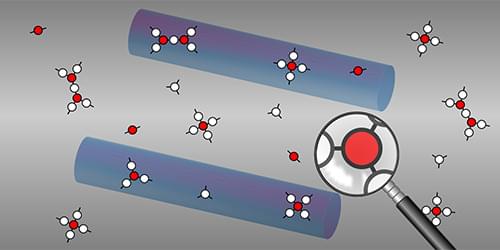Quantum simulators can help researchers extract the key parameters of a quantum field theory from experiments.
One of the greatest challenges in physics is to understand how collective, macroscopic behaviors, such as phase transitions, emerge from the microscopic dynamics of the constituents of a system. A pivotal approach to tackle such many-body problems is offered by quantum field theory (QFT), which plays a central role in describing, for instance, superconductivity and the quantum Hall effect. QFT makes a number of problems solvable by describing a system in terms of fields distributed in space and time, while neglecting many of the microscopic details of the system. However, when developing a QFT description for a given system, it can be challenging to derive the theory’s parameters from experiments, limiting the theory’s predictive power. Now, Torsten Zache of Heidelberg University, Germany, and colleagues have demonstrated a new approach to incorporate experimental data into the construction of a QFT [1].
